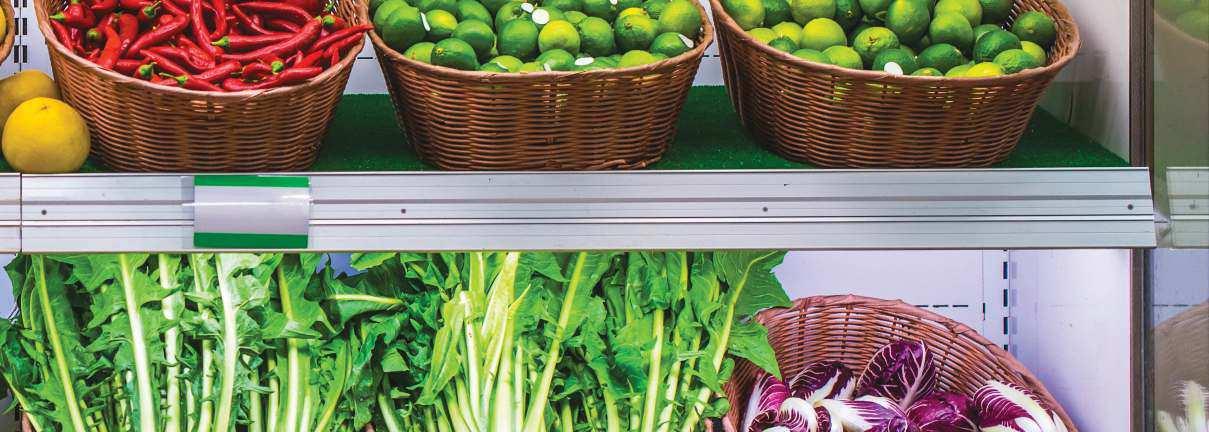
26 minute read
UNIT 8
Cambridge University Press 978-1-108-60114-6 — Prism Reading Level 3 Student's Book with Online Workbook Alan S. Kennedy , Chris Sowton Frontmatter More Information
Academic Disciplines Economics / Sociology
Advertisement
8 AGING
Academic Disciplines Design / Fine Art
7 ART AND DESIGN
Academic Disciplines Engineering / Physics
6 ENERGY
1 The Social and Economic Impact of Aging (interview) 2 Saudi Arabia: The Realities of a Young Society (case study) Using your knowledge to predict content
2 Photography as Art (essay)
1 All that Art Is (article) Scanning to find information Understanding key vocabulary Reading for details Making inferences Taking notes on main ideas Scanning to find information Working out meaning Synthesizing
Understanding key vocabulary Predicting content using visuals Reading for details Taking notes Making inferences Using your knowledge Reading for main ideas Understanding paraphrase Identifying opinions Synthesizing
2 Reduce, Reuse, Recycle (essay)
1 Renewable Energy (fact sheet) Working out meaning from context Predicting content using visuals Understanding key vocabulary Reading for main ideas Reading for details Using your knowledge Taking notes Making inferences Synthesizing
Academic Disciplines Architecture / Urban Planning
5 ARCHITECTURE
1 We Need More Green Buildings (article) 2 Form, Function, or Both? (essay) Skimming a text Using your knowledge Understanding key vocabulary Reading for details Annotating Making inferences Summarizing Understanding paraphrase Synthesizing
Cambridge University Press 978-1-108-60114-6 — Prism Reading Level 3 Student's Book with Online Workbook Alan S. Kennedy , Chris Sowton Frontmatter More Information
Academic collocations with prepositions Language of prediction
Paraphrasing Vocabulary for art and design
Energy collocations Formal and informal academic verbs
Academic word families Architecture and planning vocabulary
Senior Exercise Critical Thinking Collaboration
A Culinary Art Canvas Critical Thinking Collaboration
Wind Turbines Critical Thinking Collaboration
Building a Green Home
Critical Thinking Collaboration
Cambridge University Press 978-1-108-60114-6 — Prism Reading Level 3 Student's Book with Online Workbook Alan S. Kennedy , Chris Sowton Frontmatter More Information
PR_SB3_INT_U07_p122-139.indd 126-127
126
2 Art is typically divided into two areas: fine art (such as painting, sculpture, music, and poetry) and applied art (such as pottery, weaving, metalworking, furniture making, and calligraphy). However, some claim that the art label can also be attached to car design, fashion, photography, cooking, or even sports. Fine art is categorized as something that only has an aesthetic or conceptual function. This point was made over a thousand years ago by the Greek philosopher Aristotle, who wrote, “the aim of art is to represent not the outward appearance of things but their inward significance .” He noted that artists produced objects, drama, and music that reflected their emotions and ideas, rather than just trying to capture a true image of nature. Andy Warhol, the American artist famous for his Pop Art in the 1960s, once said, “An artist produces things that people don’t need to have.” This is the distinction between fine and applied art. Applied arts require an object to be functional as well as beautiful.
1 What is art? This question has puzzled philosophers and great thinkers for centuries. In fact, there is disagreement about exactly what art is. Most of us would agree that Leonardo da Vinci’s Mona Lisa is art, but what about a video game? One dictionary definition states that art is “making objects, images, or music, etc. that are beautiful or that express certain feelings.” This, however, could be regarded as too broad a definition. There are actually a number of different categories of objects and processes under the umbrella term of art that can be explored.

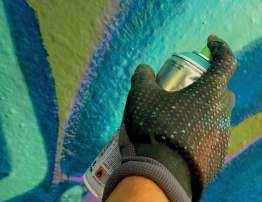

ALL THAT ART IS
1 unauthorized (adj) without official permission

5 Art anthropologist Ellen Dissanayake, in the book Art For ? offers one intriguing function of art: “the heightening of existence.” In other words, art makes our ordinary, everyday lives a little more special. This notion may not apply to all art, but perhaps we can agree that it is a good goal toward which all artists should reach.
4 Despite a hundred years of modern art, fine art is still regarded as a preserve of the wealthy. Hirst’s works, for example, sell for millions of dollars. Even so, we can see examples of art all around us that are not expensive. Many towns and cities have public art that can be enjoyed by all. Some museums, like the National Gallery of Art in Washington, D.C., are free. Others are free for children and students. Street art is also popular in different neighborhoods around the world. One British artist, Banksy, has become world-famous for unauthorized 1 works of art painted on building walls. These can be viewed at no charge by anyone who knows where to look.
Everything an artist produces is art. „ “
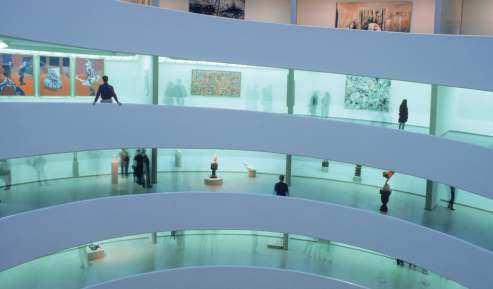

3 In the twentieth century, artists began to challenge the established idea of art. They recognized that their work belonged to the higher social classes who had the wealth to purchase art and the leisure time to enjoy it. The architect Frank Lloyd Wright commented, “Art for art’s sake is a philosophy of the well-fed.” In an attempt to challenge this notion , the French painter Marcel Duchamp submitted a toilet to an art exhibition in 1917 instead of a painting. He signed it and said, “Everything an artist produces is art.” Today, many people complain about the lack of skill in the production of conceptual artistic objects. Some contemporary artists use assistants to produce all their art for them. British artist Damien Hirst claims that as long as he had the idea, it is his work. He has compared his art to architecture, saying, “You have to look at it as if the artist is an architect, and we don’t have a problem that great architects don’t actually build the houses.”
PR_SB3_INT_U07_p122-139.indd 124-125
124 3/26/18 6:56 PM
127
What is
READING 1 7
Receptive, language, and analytical skills Students improve their reading skills through a sequence of proven activities. First they study key vocabulary to prepare for each reading and to develop academic reading skills. Then they work on synthesis exercises in the second reading that prepare students for college classrooms. Language Development sections teach vocabulary, collocations, and language structure.
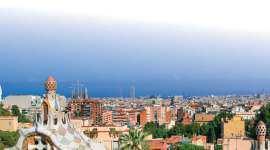

READING
7 Many people share the like car and video game design. that the term “art” also applies to things
5 It is now well that Pablo Picasso was one of the great artists of the twentieth century. 6 Art historians often explain the of very famous works of art and how they may have influenced our society.
3 It is common these days to prefer classic, old homes in my neighborhood. 4 In art class we learned the between fine art and applied art.
architecture, but I like the
1 A sculpture in which the artist’s main idea or message is considered more important than the technique can be called art. 2 The new museum in town has a lot of appeal. The exterior of the building is very beautifully designed.
significance (n) importance
notion (n) a belief or idea
established (adj) generally accepted or familiar; having a long history
distinction (n) a difference between similar things
contemporary (adj) existing or happening now
conceptual (adj) based on ideas or principles
aesthetic (adj) great beauty relating to the enjoyment or study of beauty, or showing
1 UNDERSTANDING KEY VOCABULARY Read the definitions. Complete the sentences with the correct form of the words in bold.
PREPARING TO READ
READING 1
Cambridge University Press 978-1-108-60114-6 — Prism Reading Level 3 Student's Book with Online Workbook Alan S. Kennedy , Chris Sowton Frontmatter More Information
Summarizing the unit Each unit ends with a carefully selected video clip that piques student interest and pulls together what they have learned. Video lessons also develop key skills such as prediction, comprehension, and discussion.



3

VIDEO

PR_SB3_INT_U07_p122-139.indd 128-129 PR_SB3_INT_U07_p122-139.indd 138-139
138
d Lauren finds leftovers in her refrigerator.
c Lauren creates petals from the inside of a radish.
a Lauren photographs her finished artwork. b Lauren peels the skin off a radish.
3
UNDERSTANDING MAIN IDEAS Watch the video. Put the activities in the order that they happen (1–6).
WHILE WATCHING
1 What materials is the artist using? 2 Do you consider this art? Why or why not?
2 PREDICTING CONTENT USING VISUALS questions with your partner. Look at the pictures from the video. Discuss the
3 What are some nontraditional materials used in art?
1 What kinds of art do you like? 2 What materials are commonly used in art?
1
ACTIVATING YOUR KNOWLEDGE Work with a partner. Discuss the questions.
PREPARING TO WATCH
tarragon (n) a plant whose narrow leaves taste similar to licorice and are used in cooking as an herb
go off (phr v) go bad (informal, British) to spoil or rot; to
stall (n) a table at a market where goods are sold
leftovers (n) food that has not been used or eaten and is kept after a meal
GLOSSARY capture (v) to describe something successfully using words or pictures
tarnished (adj) dull or discolored
radish (n) a small, round vegetable, usually red or white, that is often eaten raw in salads
WATCH AND LISTEN
3/26/18 6:56 PM
129
Critical thinking and collaboration Multiple critical thinking activities prepare students for exercises that focus on academic reading skills. Collaboration activities help develop higherlevel thinking skills, oral communication, and understanding of different opinions. By working with others students, they become better prepared for real life social and academic situations.

2 MORE READING
Sweeping It Under the Carpet by Banksy
C As a class, classify all the examples of art by category on the board.
B Choose three examples of “art for art’s sake” and three examples of “art that has a purpose.” Share your examples with the class, and explain your choices.
• Does art have to have a purpose, or can it just be beautiful or interesting to look at?
• What is the main purpose of art?
8 A Work in a small group. Discuss the following questions:
COLLABORATION
Which of the artists in the text do you agree with most? Why?
APPLY
Do you think art is only for rich people? Why or why not?
ANALYZE
7 Work with a partner. Discuss the questions.
CRITICAL THINKING Should car design be classified as art? Why or why not?
EVALUATE
6 Only the rich think that art does not need a purpose.
5
It does not matter if the artist doesn’t actually make the work of art.
4 A building wall can be used like a canvas.
3 Everything an artist makes can be considered art.
2 Art isn’t functional.
1
It is the idea of the work of art that is most important.
6 MAKING INFERENCES Which of the artists mentioned in the article would probably have these opinions?
READING BETWEEN THE LINES
READING 1 7
Cambridge University Press 978-1-108-60114-6 — Prism Reading Level 3 Student's Book with Online Workbook Alan S. Kennedy , Chris Sowton Frontmatter More Information
• Carefully selected vocabulary students need to be successful in college are based on the General Service List, the Academic Word List, and the Cambridge English Corpus.
Research-based • Topics, vocabulary, academic and critical thinking skills to build students’ confidence and prepare them for college courses were shaped by conversations with teachers at over 500 institutions.
Extended learning • The Online Workbook has one extra reading and additional practice for each unit. Automated feedback gives autonomy to students while allowing teachers to spend less time grading and more time teaching.
PR_SB3_INT_U07_p122-139.indd 132-133
132
The production of fine art is the use of skill and imagination to create aesthetic objects or experiences that can be shared with other people.... 1
PHOTOGRAPHY as ART
3/26/18 6:56 PM
133
4 People have argued whether photography is art ever since the first photographers shared their work. A photographer may make the same aesthetic choices as a fine artist: subject matter, lighting, color, or even a theme or message. However, cameras can also be purely functional tools, capturing visual records and presenting information. Photography is a medium that can be used to make art, but that does not mean that all photography is art.

3 In truth, most photographs are basically objective records of a particular place at a particular time. Certainly we can appreciate a beautiful photograph when we see one, but any beauty that is perceived in the picture comes from the time and place where it was taken, and it is not the creation of the photographer. Also, sophisticated and expensive equipment often plays a greater role in the success of a photograph than the photographer’s creativity. Even some of the greatest photographers acknowledge that there is a limit to the amount of influence they can have on a final product. Henri Cartier-Bresson, the famous French photographer, admitted that luck was the most important factor. Finally, photography is so widely used for practical functions that have little or nothing to do with art, such as police work, advertising, and news reporting, that it cannot claim to be made for aesthetic purposes alone.
Andreas Gursky: Cindy Sherman: Gilbert & George: Jeff Wall: Andreas Gursky: Rhein II Untitled #96 For Her Majesty Dead Troops Talk 99 Cent II Diptychon
$3.3 million
$3.7 million
$3.7 million
$3.98 million
$4.3 million
The Most Expensive Photographs Sold (as of 2018)
2 It is true that photography can be appreciated on the same level as other recognized forms of visual art. Sometimes decisions involved in creating a photograph are analogous to those made by any other artist. A photograph is not always just a banal record of the world, but a deliberately created image with its own artistic features. Ansel Adams, the American photographer, commented on this point when he noted that take is not the right verb for a photograph. Instead, he said, one makes a photograph. To this end, there is a growing trend for photographers to call themselves artists. Nevertheless, we cannot ignore the fact that artists can sell their pieces in the higher-priced, fineart markets, whereas photographers cannot. A photograph by German artist Andreas Gursky, for example, recently sold for almost $4.5 million. As cynical as it may sound, no one would likely pay that much for a photograph unless the photographer presented himself as an artist.

... Photography is thought by some to be a form of fine art because it is made using the same critical and creative process that a painter or sculptor would use. It seems clear, however, that there is a significant difference between creating images by hand—using paint, clay, or other tools—and pointing a mechanical device at something interesting and clicking. Although photography does have some features in common with other kinds of art, it cannot be said that photography is unquestionably art. 7 READING 2
• Readings from a variety of academic disciplines in different formats (essays, articles, websites, etc.) expose and prepare students to comprehend real-life text they may face in or outside the classroom.

Building confi dence • Prism Reading teaches skills that enable students to read, understand, and analyze university texts with confidence.
• Teachers can deliver effective and engaging lessons using Presentation Plus.


Capturing interest • Students experience the topics and expand their vocabulary through captivating readings and videos that pull together everything they have learned in the unit, while developing academic reading and critical thinking skills.
PR_SB3_INT_U07_p122-139.indd 122-123
122
1 Do you like art and design? If so, what media (e.g., painting, music, architecture, fashion) do you like? 2 Are you artistic? If so, what kinds of artistic activities do you like doing? 3 Look at the photo. Would you call this art? Why or why not? 4 Are art and design important for a country’s economy? Why or why not?
Work with a partner. Discuss the questions.
ACTIVATE YOUR KNOWLEDGE
Key Reading Skill Scanning to find information Additional Reading Skills Understanding key vocabulary; predicting content using visuals; reading for details; taking notes; making inferences; using your knowledge; reading for main ideas; understanding paraphrase; identifying opinions; synthesizing Language Development Paraphrasing; vocabulary for art and design
LEARNING OBJECTIVES
ART AND DESIGN
UNIT 7
3/26/18 6:56 PM
123
UNIT 7
Cambridge University Press 978-1-108-60114-6 — Prism Reading Level 3 Student's Book with Online Workbook Alan S. Kennedy , Chris Sowton Excerpt More Information

3 What effects has globalization had on your country?
2 Does it matter that people now import so many goods from other countries? Why or why not?
1 What types of food are made in your country and sold in others? Do you buy food and other products from other countries?
Work with a partner. Discuss the questions.
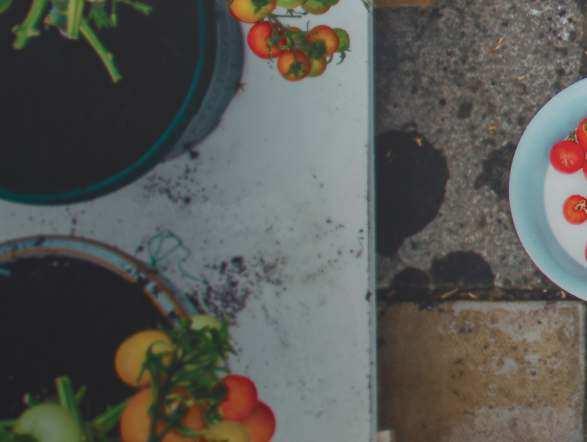
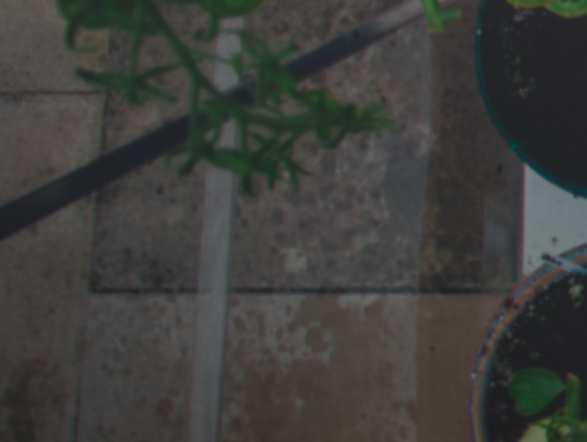
ACTIVATE YOUR KNOWLEDGE
Language Development Academic alternatives to phrasal verbs; globalization vocabulary
Additional Reading Skills Understanding key vocabulary; annotating; reading for details; working out meaning; making inferences; reading for main ideas; paraphrasing; identifying purpose and audience; synthesizing
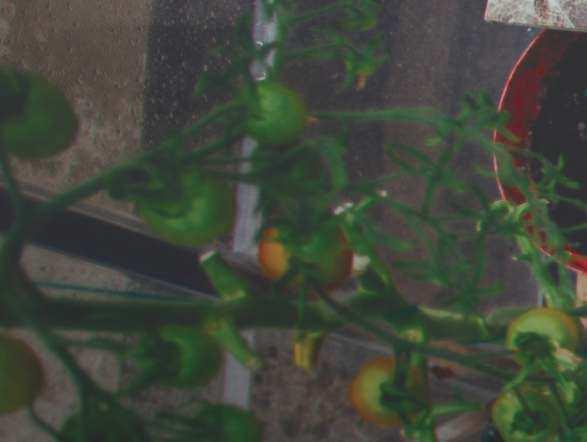
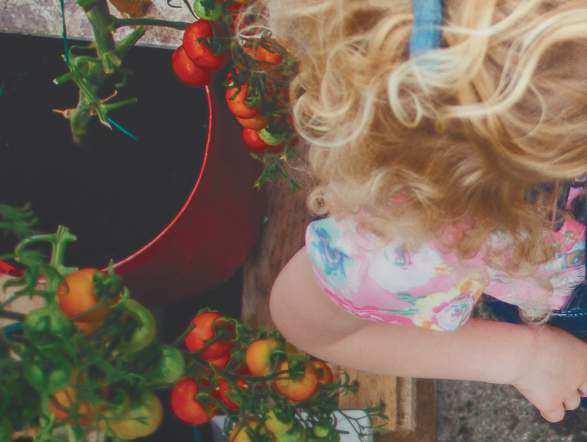
Key Reading Skills Making predictions from a text type; scanning topic sentences; taking notes on supporting examples
LEARNING OBJECTIVES

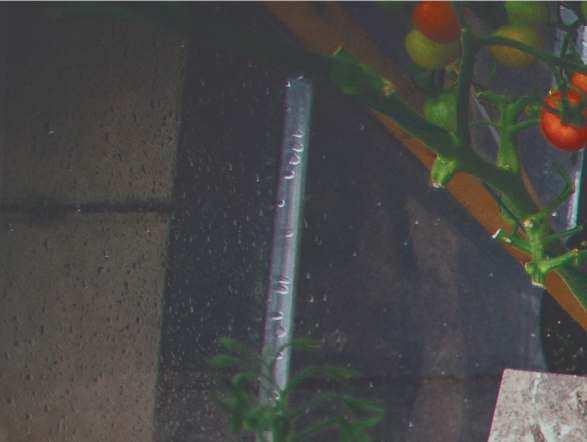
GLOBALIZATION
Cambridge University Press 978-1-108-60114-6 — Prism Reading Level 3 Student's Book with Online Workbook Alan S. Kennedy , Chris Sowton Excerpt More Information
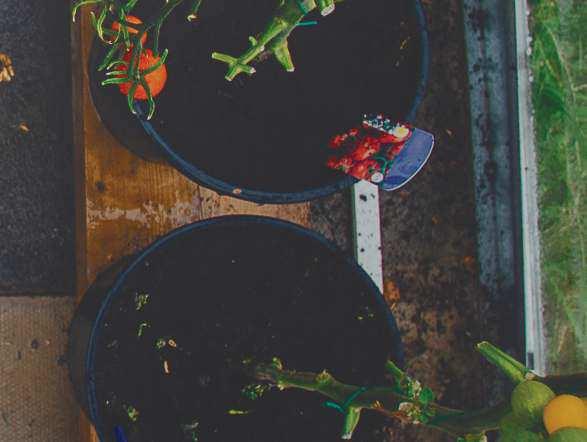






Cambridge University Press 978-1-108-60114-6 — Prism Reading Level 3 Student's Book with Online Workbook Alan S. Kennedy , Chris Sowton Excerpt More Information
1 8 Good chefs use the best ingredients when they cook to make sure the food is flavorful and delicious.
7 Besides the delicious food, according to the critic, another selling point of the restaurant is that it has beautiful, traditional Japanese furniture and art on the walls.
6 The restaurant is offering a discount : anyone who eats dinner before 7:00 p.m. on Monday only has to pay 50% of the menu prices.
5 The food critic insists that people must visit the restaurant.
4 The restaurant is situated near the river, which is a very popular place.
3 The fish at this restaurant is always extremely fresh . If it has been in the kitchen for more than one day, they will not use it.
2 The chef at this restaurant is well known for being a perfectionist . He takes a long time to prepare his dishes, and he will not serve them unless they look exactly right.
1 A food critic wrote that she was impressed by the sushi restaurant’s authenticity and how it is run by chefs from Japan.
UNDERSTANDING KEY VOCABULARY next to the definitions. Read the sentences and write the words in bold
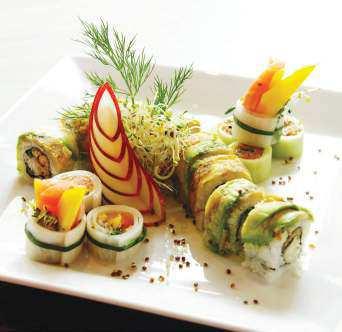
PREPARING TO READ

Cambridge University Press 978-1-108-60114-6 — Prism Reading Level 3 Student's Book with Online Workbook Alan S. Kennedy , Chris Sowton Excerpt More Information
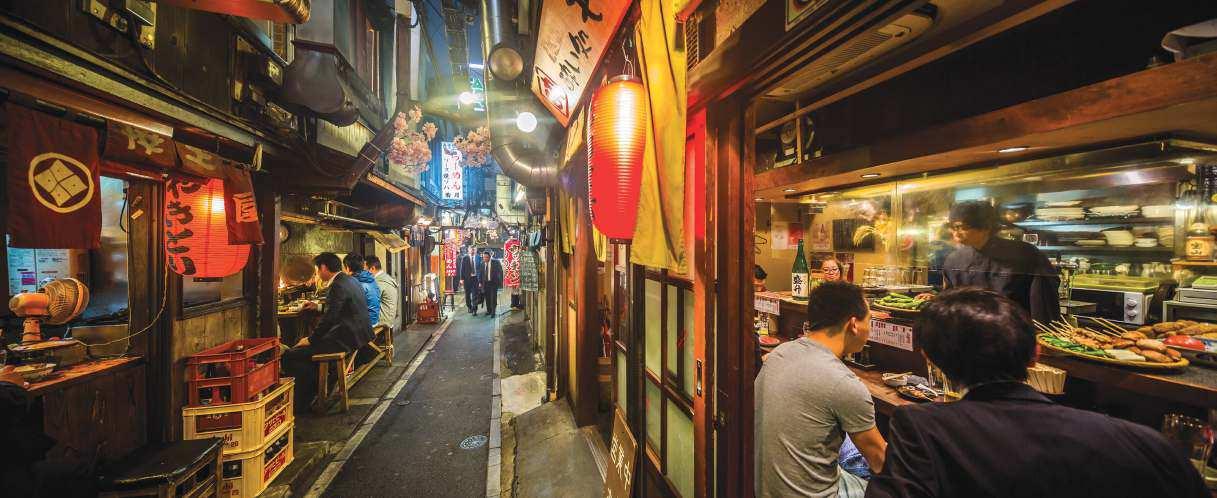
Shinjuku’s Omoide Yokocho is a popular eating area in Tokyo, Japan.
2 4 The information will be up-to-date.
3 The writer will give his or her personal opinions.
2 The contents will be appropriate for an academic essay.
1 The style will be informal.
PREDICTING CONTENT You are going to read a blog post. Before reading, which of the statements do you think will be true?
Different text types, such as essays, articles, and blogs, have different characteristics. Some will be more suitable for academic study than others. Before reading a text, you can make predictions about the information and the style of the writing. The source, title, and any pictures can help you predict the content.
MAKING PREDICTIONS FROM A TEXT TYPE
SKILLS
h
g
f
e
d
c
b
a (n) the quality of being real or true
(v) to say firmly or demand forcefully
(adj) in a particular place
(n) a person who wants everything to be perfect and demands the highest standards possible
(n) food that is used with other foods in the preparation of a particular dish
(n) a reduction in the usual price
(n) a feature that persuades people to buy a product
Cambridge University Press 978-1-108-60114-6 — Prism Reading Level 3 Student's Book with Online Workbook Alan S. Kennedy , Chris Sowton Excerpt More Information
ELSEWHERE
FOLLOWERS 201k
More information
3 And I have great news for you. When I told him that I write a food blog, he said he’d give all my readers a 10% discount! Just mention this blog when you make a reservation.

MODA IN EAST CALHOUN 2 I’m kicking off this week’s blog by talking about a fantastic new Turkish restaurant in East Calhoun called Moda. I can’t remember ever eating better Turkish food—it was so delicious! In fact, this is one of the things that the restaurant prides itself on 1 —the fresh ingredients and authenticity of the cooking. Apparently, the chef insists that the fruit and vegetables be brought over twice a week from his home region in Turkey—and from nowhere else. He may be a perfectionist, but it was so delicious that I can’t complain. Moda isn’t cheap, but it’s definitely worth every penny.
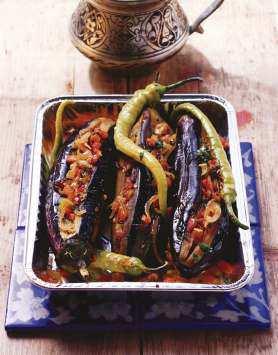
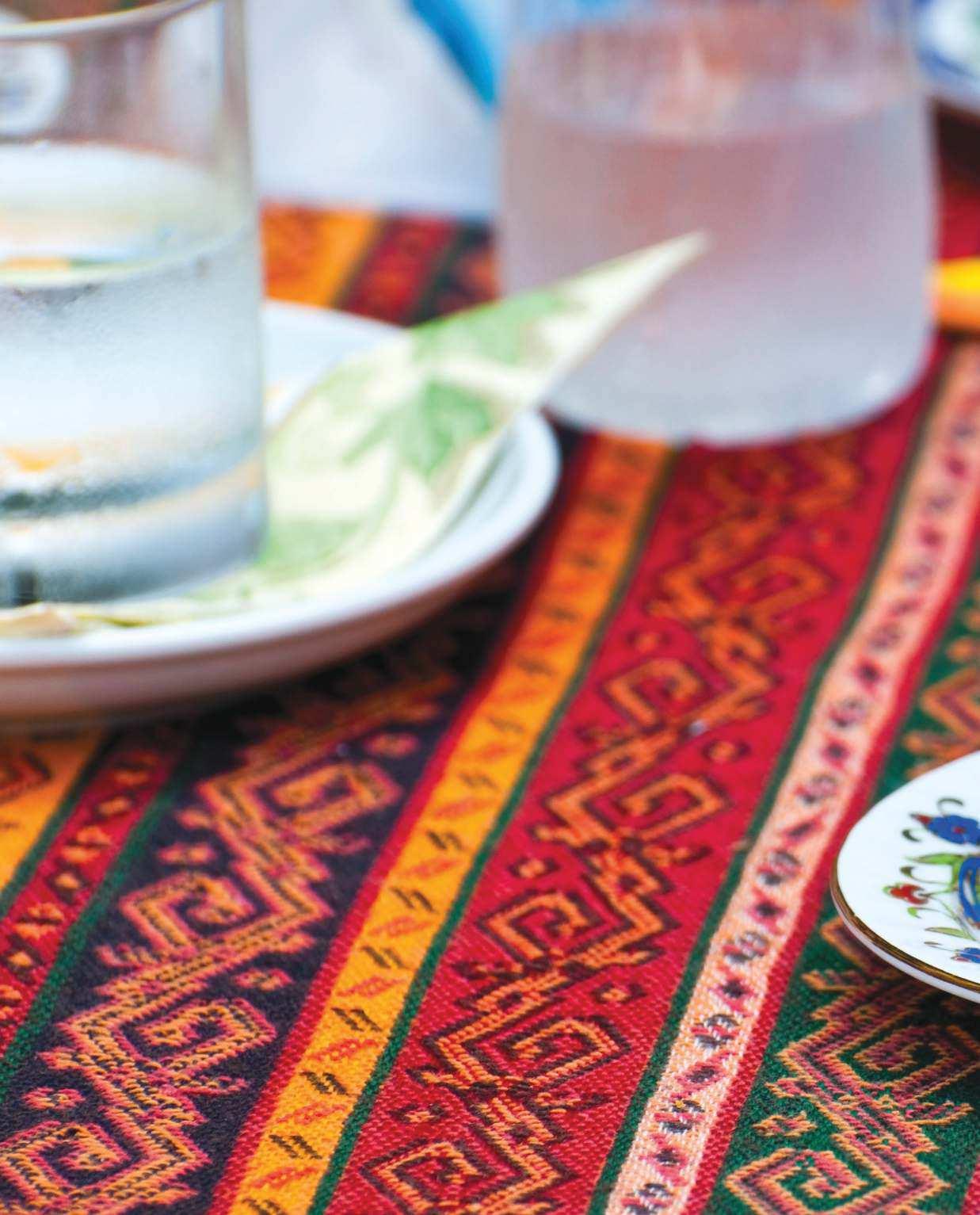
1 Hello Minneapolis foodies!
Turkish Treats

Cambridge University Press 978-1-108-60114-6 — Prism Reading Level 3 Student's Book with Online Workbook Alan S. Kennedy , Chris Sowton Excerpt More Information
2 locally sourced (adj) originating from a nearby location; not requiring lengthy transportation

1 prides itself on (phr v) is proud of 19
25 replies102
I know what you’re saying, Ecovore, but you can’t just blame places like Moda. If we grow exotic vegetables in Minnesota, then we have to use heated greenhouses, and that probably uses even more energy.
Anonymous October 11
5 replies81
Ecovore October 10 I’m not sure we should be supporting restaurants like Moda. They are very bad for the environment. What about all the extra carbon emissions from the transportation that’s required to bring over those ingredients from Turkey? That kind of transportation wastes fuel and creates pollution.
11 replies57

TwinCitiesMom October 10 Hi—regarding your last point, I’ve found the same thing recently. I read somewhere that the average “shopping cart” has already increased by 20% this year. The prices have gone up so much because of the awful weather we’ve been having, and they may go up even more. How are we supposed to feed our families?
5 One final point: I couldn’t believe how pricey my weekly grocery shopping trip was this week. Normally, it’s about $40, but this week, it was more than $55 for more or less the same amount of food. Any ideas why?

CHEZ FITZ DOWNTOWN 4 A very different restaurant, where I had lunch last Monday, is Chez Fitz. Situated near downtown, its main selling point is that its food is all locally sourced 2 within 20 miles (32 kilometers) of the restaurant. My friends and I were completely amazed—we had no idea that so much could be grown so close to central Minneapolis. But it turns out that there are pockets of green all over the city—you just need to know where to look.
Cambridge University Press 978-1-108-60114-6 — Prism Reading Level 3 Student's Book with Online Workbook Alan S. Kennedy , Chris Sowton Excerpt More Information


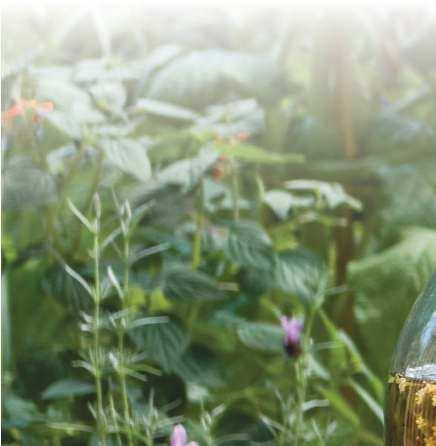
5 6 To eat at Moda regularly, you would have to be relatively wealthy.
5 Food prices are going up in Turkey.
4 Chez Fitz tries to minimize food transportation that wastes fuel and creates pollution.
3 Restaurants like Chez Fitz will become more common in the future.
2 The author has noticed an increase of almost 40% in the cost of food.
1 It is impossible to grow food in urban areas.
Read the blog again. Write T (true), F (false), or DNS (does not say) next to the statements. Correct the false statements.
4 What is TwinCitiesMom angry about?
3 What question does the blogger ask at the end of the post?
2 What is the main selling point of Chez Fitz?
4 1 Why does the blog’s author like Moda?
READING FOR DETAILS Answer the questions with information from the blog.
ANNOTATING Read the blog on pages 18−19. Check your predictions in Exercise 2. Highlight information in the blog that supports the correct answers.
Cambridge University Press 978-1-108-60114-6 — Prism Reading Level 3 Student's Book with Online Workbook Alan S. Kennedy , Chris Sowton Excerpt More Information
C Share your reviews with the class. As a class, decide which restaurant you would most like to visit.
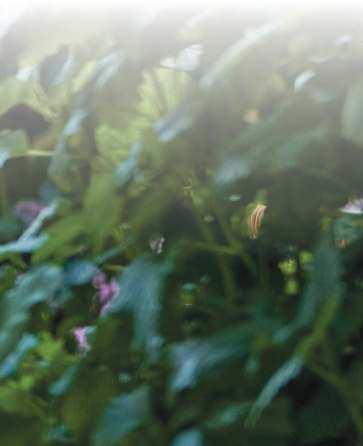
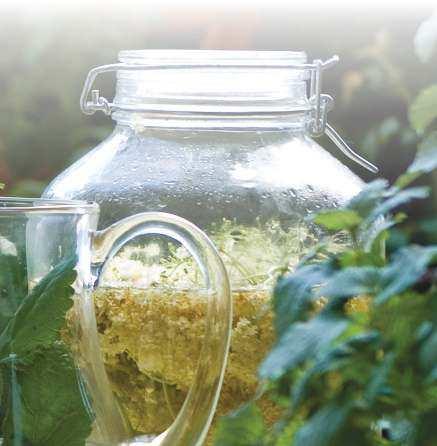

B Write a review of the restaurant for a food blog. Use Reading 1 as a model.
Likes
Name of restaurant: Dislikes
9 A Work in a small group. Choose a restaurant that you know. Complete the T-chart with things you like and the things you dislike about the restaurant.
COLLABORATION
Do you read blogs or reviews online? Why or why not? What kind of information should be in a restaurant review? Why? Should you believe restaurant reviews you read online? Why or why not?
APPLY ANALYZE EVALUATE
8 Work with a partner. Discuss the questions.
CRITICAL THINKING
7 3 Why do you think the blogger’s shopping trip was more expensive?
2 Why do you think the chef gave a discount to the blog’s readers?
1 Do you think the blog author likes perfectionists?
6 3 bring over
2 pricey
1 kick off c begin
b import
a expensive
WORKING OUT MEANING The blog author uses informal language. Match informal words and phrases to formal words. Use the context to help you.
Cambridge University Press 978-1-108-60114-6 — Prism Reading Level 3 Student's Book with Online Workbook Alan S. Kennedy , Chris Sowton Excerpt More Information
food compared to people who live in rural areas.
5 People who live in big cities tend to be familiar with international
their prices to .
4 If bad weather affects the supply of some fruits or vegetables, it can cause
foods become more expensive.
3 People sometimes reduce their of certain foods when those
that the food is fresh.
2 Others, however, prefer to see the food before they buy it to
its . Now they don’t leave their homes to buy food.
1 Many shoppers have switched to ordering groceries online because of
specialty (n) a product that is unusually good in a particular place
relatively (adv) quite good, bad, etc. in comparison with other similar things or with what you would expect
influence (n) the power to have an effect on people or things, or someone or something that is able to do this
increase (v) to become larger or greater
experiment (v) to test or to try a new way of doing something
ensure (v) to make certain that something is done or happens
convenience (n) something that is suitable to your purposes and causes no difficulty for your schedule or plans
consumption (n) the using of goods and services in an economy
PREPARING TO READ

Cambridge University Press 978-1-108-60114-6 — Prism Reading Level 3 Student's Book with Online Workbook Alan S. Kennedy , Chris Sowton Excerpt More Information
3
2 After you read the essay on pages 24–25, check your answers from Exercise 2.
3 A third major change in Italy’s food culture has been the rise of large restaurant chains.
2 Italians’ food tastes have changed because of globalization.
1 In Italy, changing trends have affected the preparation of food.
SCANNING TO FIND MAIN IDEAS You are going to read an essay about changing eating habits in Italy. Read the topic sentences. Work with a partner and discuss what you think the rest of each paragraph will be about.
Good paragraphs in formal, academic writing usually start with topic sentences . These tell you the subject of the paragraph. By reading the first sentence of each paragraph in a text, you can often get a good idea of the overall content and also which paragraph to look at if you need some specific information.
SCANNING TOPIC SENTENCES
SKILLS
with unfamiliar dishes.
8 Some travelers like to eat familiar food, but others prefer to
foods they see on TV.
on the ingredients that people use. People want to cook with
7 Recently, the popularity of cooking programs on television has had a big
and less-familiar items.
6 Larger cities often have more food stores, which sell foreign
